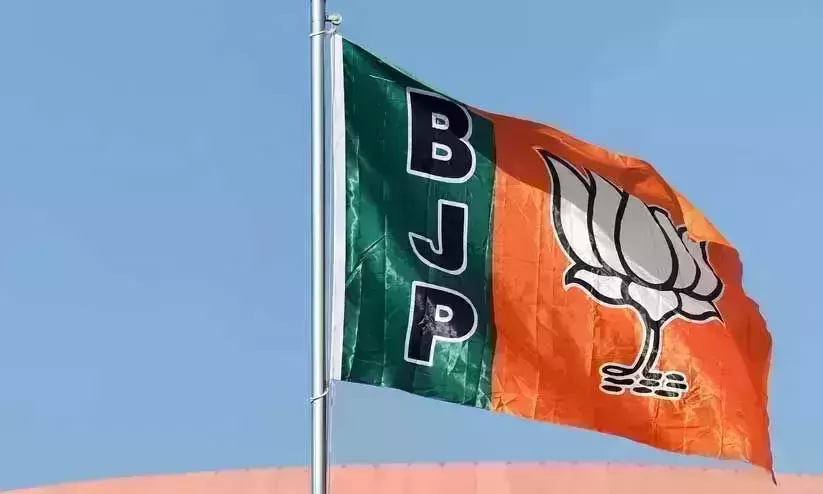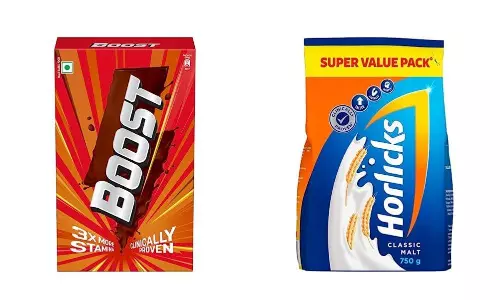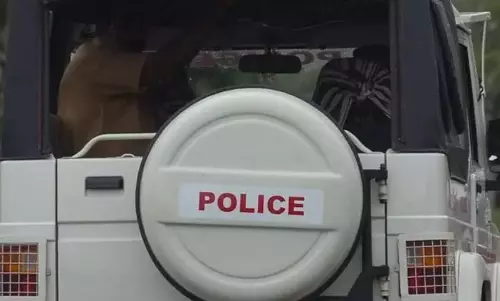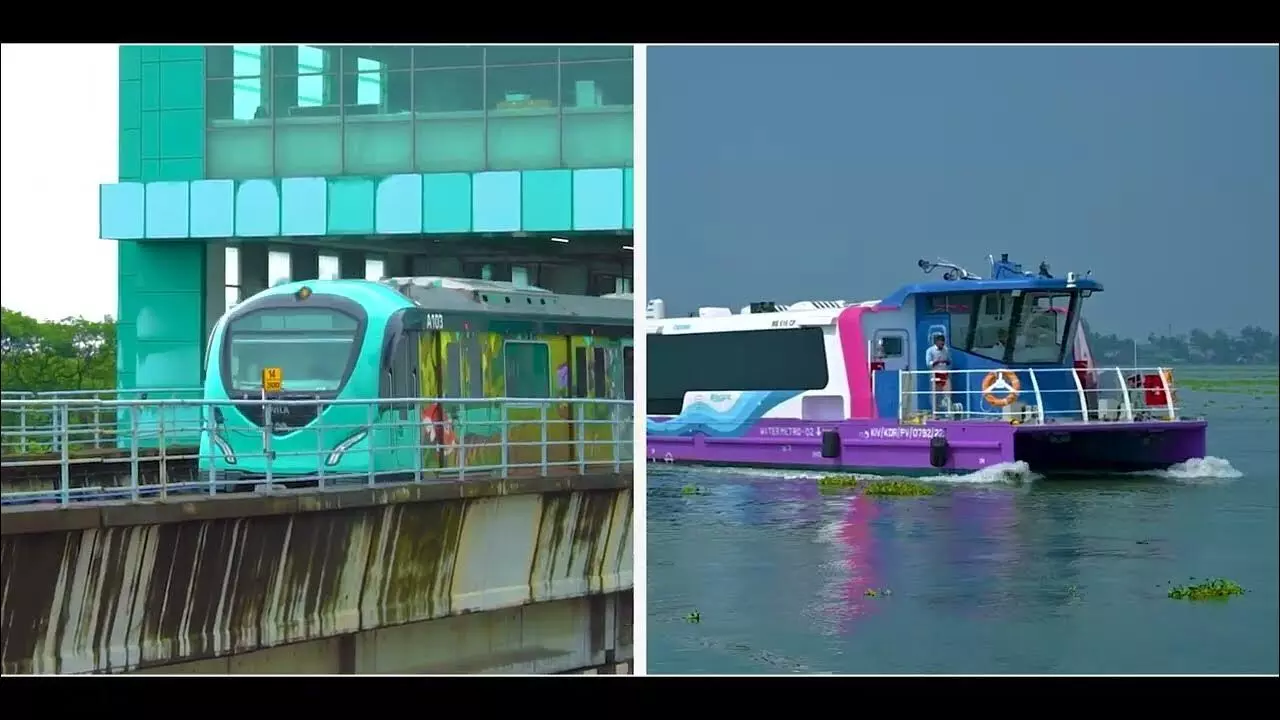
Kochi needs improved and integrated transport infrastructure
text_fieldsThe recent inauguration of the country’s first dedicated water metro service in Kochi by the Prime Minister has got most of the Kochites excited about the new addition to the city’s mobility options. However, the general state of affairs vis a vis the daily commutation around the city still remains deplorable. This is primarily due to the lack of vision and commitment from the authorities concerned who resort to solutions when problems prop up rather than laying out a sustainable and visionary framework. The long-held illusion that the traffic chaos would cease after the opening of the Metro rail network and some flyovers in the city area has given way only to more frustration among the commuters. The average daily ridership of the Kochi metro remains at a negligible 65,000 (it was expected that over 3.5 lakh commuters would use the system on a daily basis). The population of the Kochi metropolitan area spanning 440 sq. km is approximately 22 lakhs – quite low when compared to other city centres like Chennai or Bangalore – however, notorious enough to turn the city roads into a commuters’ nightmare if adequate measures are not taken within the next couple of years.
The average vehicle ownership in Kerala is high (NFHS -5 survey found that Kerala tops the country among larger states in the proportion of households owning a four-wheeler, i.e. almost 25% of families in the state-owned cars) and the width of the roads is not commensurate with the density of vehicles on the road. The scene in Kochi is also not very different from the general situation across the state. The widening and redevelopment of NH 66 is a much-needed and welcome move, but that does not address the issues specific to urban transport in the Kochi city area. What Kochi can do at this stage is to find locale–specific solutions to shift commuters from their private vehicles to public transport on a considerable scale – the water metro services being only one right step in that direction.
Though the sanction for the Phase-2 development of the Kochi metro rail was granted some months ago, the piling works have yet to start (KMRC had stated that the piling would start in March). The traffic bottleneck of Civil Lines road which would soon be barricaded for the pillar works witnesses serpentine lines of vehicles during rush hours and the condition would only worsen when barricading is done. The situation is not much different at the busy Collectorate Junction. The commencement of Metro services up till the Infopark campus and Kakkanad would help to attract more passengers to the rapid system provided that the authorities give their best to improve seamless first and last-mile connectivity. The vast network of CNG rickshaws and shared auto systems in Delhi has time and again proven to be a feasible last-mile connectivity provider at relatively cheaper rates. A similar system prevails in Chennai as well. When commuters have the option to be picked up or dropped from/at their source/destinations at cheaper rates, they would start making the shift from their two-wheelers or cars to metro systems. This would add to the average middle-class family’s savings as well.
CNG and electric buses could be deployed with services at set intervals to take a larger share of passengers to their destinations directly from the metro stations. Services to Infopark, airports, hospitals, and prominent tourist destinations could serve as a game-changer. Mere commencement of such services would not be enough; the existence of such options must be well publicised, incentivized, and properly maintained. The metro authorities must also work in a time-bound manner to extend the metro services to the Kochi International Airport on a model similar to the Orange line network of Delhi Metro with limited stops en route to the airport. Any further delay in these actions would leave the traffic chaos complex with the increase in population and vehicle density on city roads. An extension of a line in the future towards the densely populated Perumbavoor town must also be explored.
Adequate measures must be taken to clear the drains of plastic and silt in order to forestall the cyclical inundation of arterial roads during rains. The frequent inundation of roads creates traffic jams and, worse, leads to several fatal accidents, in addition to damage to hygiene. All the dilapidated footpaths must be redeveloped in a time-bound manner and pedestrian foot overbridges must be provided at junctions with heavy traffic flow. This would avoid blockages and accidents caused due to the surface crossing of roads by pedestrians. It’s unfortunate that our public policy and urban planning totally overlook the plight of pedestrians – especially the young, elderly, and the disabled – who find it nearly impossible to cross roads safely. Any progress without giving adequate importance to inclusivity would prove to be detrimental in the long run. Strict enforcement of lane discipline and speeding using AI cameras can help crack down on erring drivers and contribute to the smooth flow of traffic on city roads. Flyovers must be built or rebuilt at locations like Atlantis, Collectorate Junction, South Railway Station, CusMetroat Junction, Ravipuram, and Thripunithura. The possibility of building additional flyovers at Vytilla and Edapally Junction must also be explored. The Vytilla Mobility Hub should be maintained properly for it to be showcased as a model for the integration of public transport.
Getting new MEMU trains to provide service during peak hours to the suburbs of Kochi – namely Chalakudy, Angamaly, Aroor, Cherthala, and Piravom - would act as a solution to the mobility woes. This would be a short-term solution to improve suburban transport as Kochi does not provide an ideal geographic setting to establish a suburban train network like the one in Chennai or Mumbai. The utilization of inland waterways for the transport of cargo and fuels can take off a bulk of fuel tankers and container trucks from the already congested roads of Kochi city. The Kollam – Kottapuram waterway must be fully utilised for this purpose. This not only takes heavy load vehicles off the road, but also is economical, environment friendly, and relatively faster.
Patience is the name of the game that Kochi metro rail authorities must adopt in order to make the system an efficient one. As the Delhi Metro proved, an extension of services would directly lead to an increase in daily average ridership of the system. The Delhi Metro started operations on an 8km stretch in 2002 and by 2008 it had average ridership of approximately 625,000 passengers. This increased to around 2,593,000 passengers in 2019. The increase was directly proportional to the widening of the network to over 345 km. Only dedicated steps from the part of all authorities concerned over urban transport would help transform Kochi into a model city for public transport. The water metro must be viewed as a step in the right direction which would remain meaningless if other areas, especially last-mile connectivity options, are neglected in the scheming. A day when a passenger can seamlessly shift from water metro to metro rail and metro rail to buses or e-autos or even access the airport, and a day when the bulk of Kochites would voluntarily prefer public transport due to its advantages, alone will signal the success of the integrated model of urban transit in Kochi.
(Vishnu PK is a Kochi-based quiz master and academic)
























